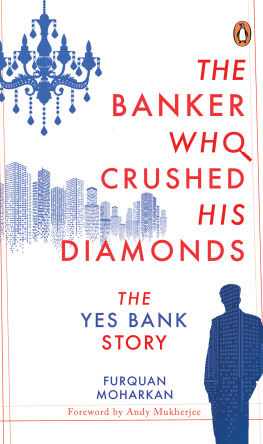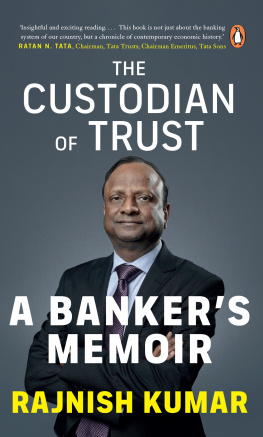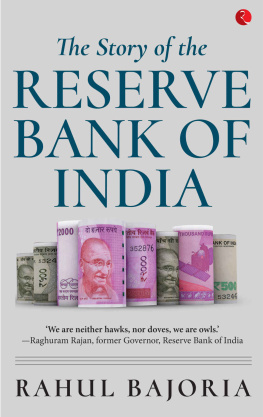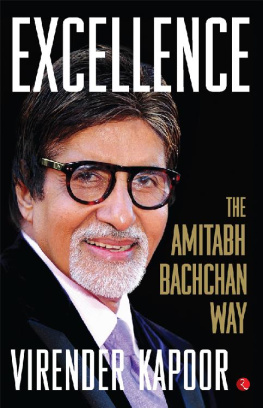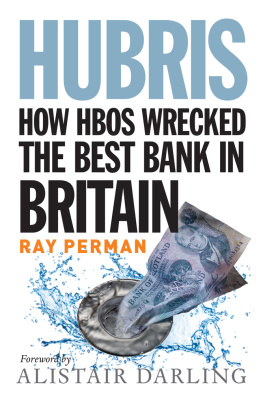Foreword
Rana Kapoor was certainly not the first Indian financier to behave badly. But what makes the story of his rise and fall compelling is the light it shines on a certain stage in Indias economic development, a period in which the innocent enthusiasm of the countrys 1990s reforms slowly gave way to cynical and pervasive rent-seeking. In a sordid display of greed and hubris, some private-sector bosses erected for their private gains vast edifices of assets with the help of money taken from other people, usually bank depositors, but later also mutual fund investors.
The start of this age coincided roughly with the 2004 launch of Kapoors YES Bank. So the intimate account Furquan Moharkan gives in The Banker Who Crushed His DiamondsThe YES Bank Story is not merely of one failed bank or one humbled banker; its the story of an era.
Since this period is far from over, the regulators should read this book as a cautionary tale rather than a history lesson. Theres a growing idea that Indias banking industry needs an influx of fresh capital; new licences need to be given to non-bank financial services firms and even non-financial conglomerates to enable them to run deposit-taking institutions. The question policymakers should ask of themselves after reading this book is: We failed to catch most of Ranas shenanigans, his wayward lending, and his many conflicts of interest. His board was even more ineffective. What makes us sure that we will do it right this time?
The lay reader should pick up this book to know how badly the game is rigged. As Kapoor ran YES bank into the groundand his successor spun fantastic yarns about raising survival capitalmost (though not all) brokerage analysts and business television anchors decided to play along in cheerful complicity. Furquan lays bare the extent of the rot, and the pain it inflicted on an unsuspecting public. Hopefully, depositors and investors will be less trusting when they are being lied to the next time. While on paper India has robust banking regulations and supervision, the trappings of independent boards, and the attendant paraphernalia of auditors, rating agencies and a free press, the political economy renders them all into caricaturesan example of what economist Lant Pritchett calls an isomorphic mimicry of developing countries to make their institutions look like those in the developed world.
In the YES Bank saga, the public was fooled several times over. In my own writing about the lender, I coined the term price-to-truth ratio, as the true measure of its elevated valuation. I also revealed that Morgan Credits and YES Capital, the two entities through which the Kapoor family held large stakes in the bank, had sold debentures to mutual funds to raise money for private ventures. The backing for the debentures came from covenants, or assurances structured around YES Banks stratospheric share price. Based on those assurances, rating companies issued lofty certificates of creditworthiness. Retail investors probably have no idea theyre the ones financing Kapoors diamonds, on the basis of debt covenants as fluffy as cotton candy, I wrote.
The candy melted, the diamonds got crushed. Yes, there was a rescue, engineered by the authorities by roping in State Bank of India (SBI). Depositors didnt suffer beyond seeing their money trapped for a while. Nor were equity investors made to lose their entire investment the way additional tier-one bondholders were wiped out. But the manner in which the authorities handled the rescue didnt leave them with a template for dealing with future failures of deposit-taking institutions. As I write this foreword, a news article says that more than 60 per cent of insolvencies resolved by the bankruptcy tribunal in the JulySeptember quarter of 2020 ended up in liquidation. Thats a bad omen for creditors when the tribunal starts admitting fresh cases after the pandemic. Out-of-court corporate restructuring in India has anyway gone haywire.
Furquan shows how the crisis at YES Bank was coded in its DNA of sharp practices and outright deceit. Harkirat Singh, one of the three Indian co-founders, was edged out by Rana Kapoor even before the bank got its licence. Ashok Kapur, who could have steered the lender in a very different direction, died in the November 2008 Mumbai terror attack. Even before that fateful day, Rana, the control freak, maverick banker, as one of Furquans numerous well-placed sources described him, had decided that he was the one in chargeeven of selecting the tiles for the office floor. When his brother-in-law, Ashok, objected to this hyper-centralization, he found his cabin door locked. Rana is said to have told him: There is no need for you to come to office from now. You are a non-executive chairman; just come for the board meetings.
Its the anecdotes Furquan has tapped from his experience in investment banking research and financial journalism that make this book rich in details of what went on behind the scenes. The report that UBS wrote in 2015five years before the bank went belly-upshowed clearly that YES Banks stressed loans were 125 per cent of its net worth. And yet, Rana brazened it out. Whats worse, nobody stopped him. This book demonstrates the surge in the banks loan book between 2015 and 2018, belying the oft-repeated claim that all of Kapoors misdeeds had taken place under the previous government.
No blame game can detract attention from what is a collective political failure. If near-universal state control of banking before 1994 stymied credit to deserving borrowers, private-sector ownership by bankers like Kapoor led to an uncontrolled orgy of crony lending. There are notable exceptions, of course. But the grim reality is that without a sweeping change in the relationship between the private sector and the government, starting from a reform of the opaque financing of costly election campaigns, there is no way to get to a better, safer model of banking in India. Rana Kapoor would not be the last financier to behave badly.
Andy Mukherjee
SEEING THINGS UNFOLD
On 26 April 2019, the BSE Sensex, the benchmark index of the Bombay Stock Exchange (BSE), was trading with gains of over 200 points at 3 p.m. Suddenly, the index started tumbling and lost about 500 points in the next fifteen minutes before it recovered the ground.

